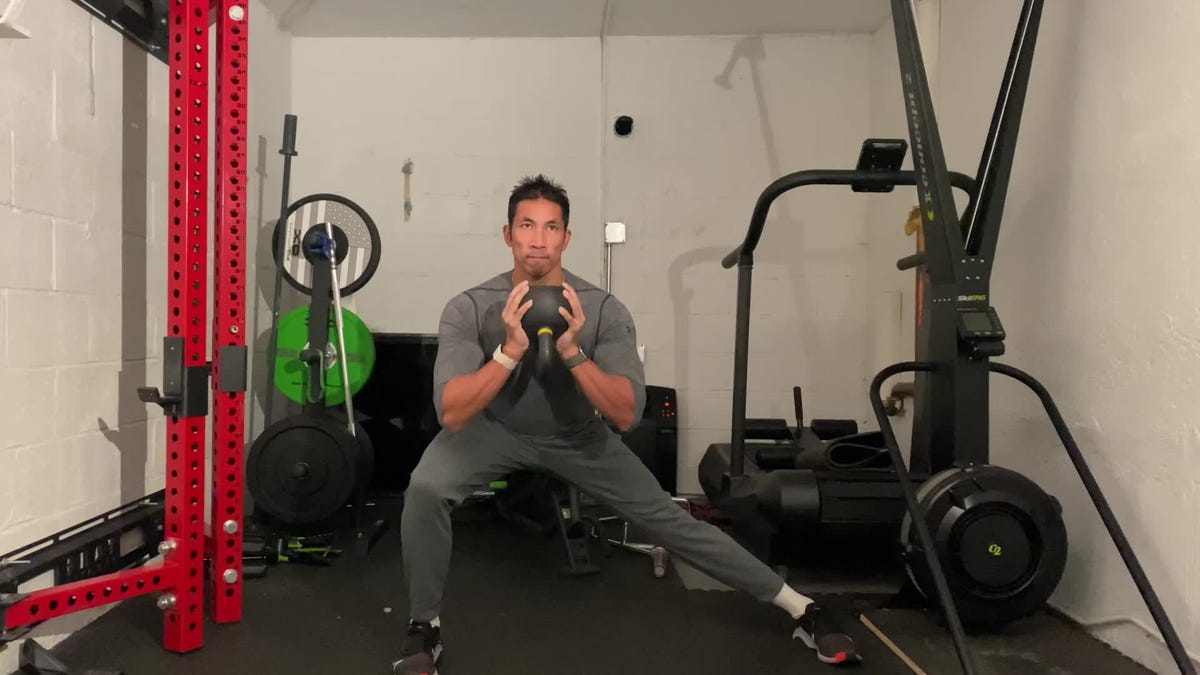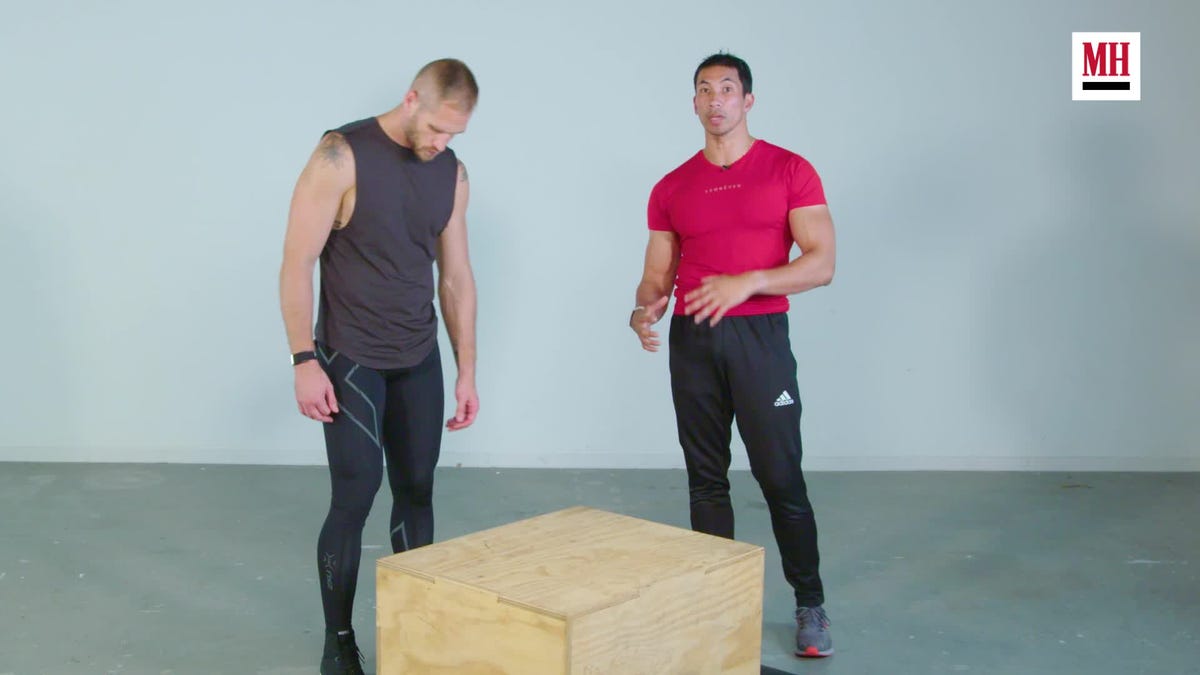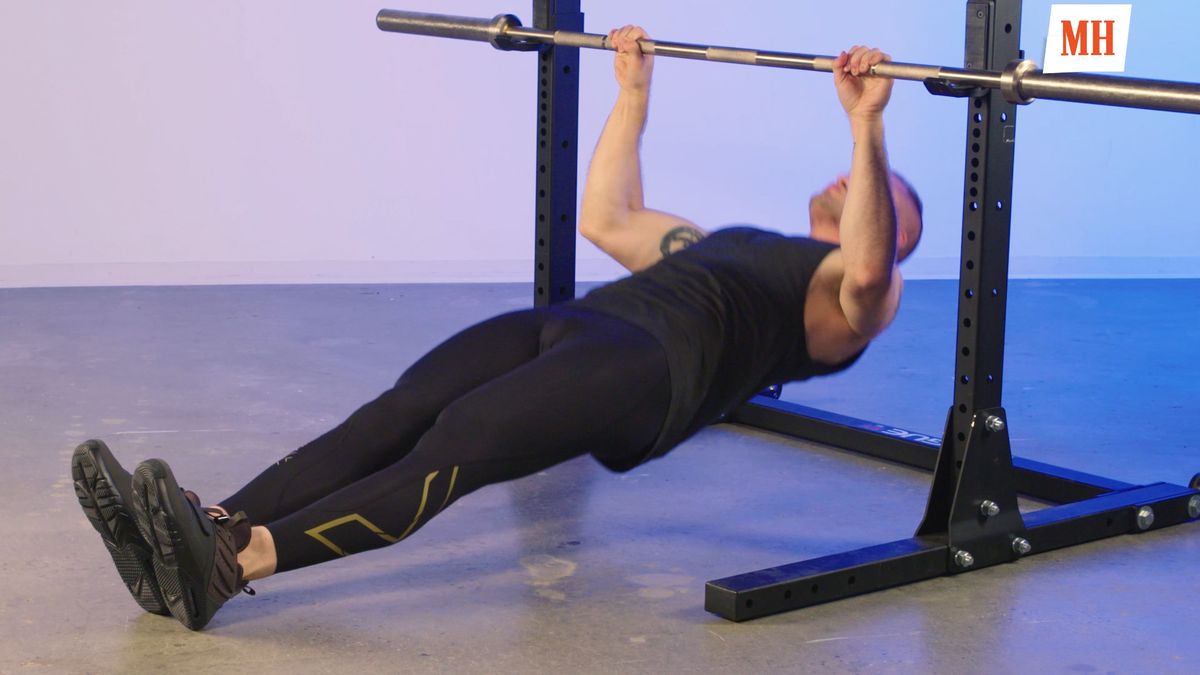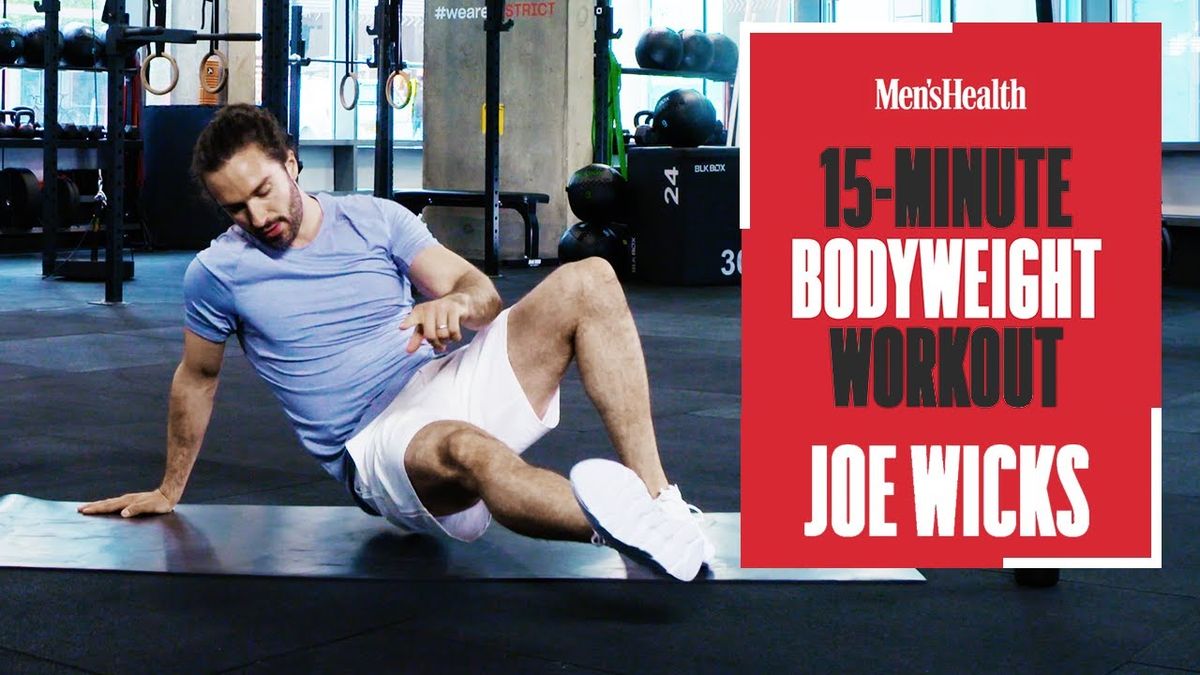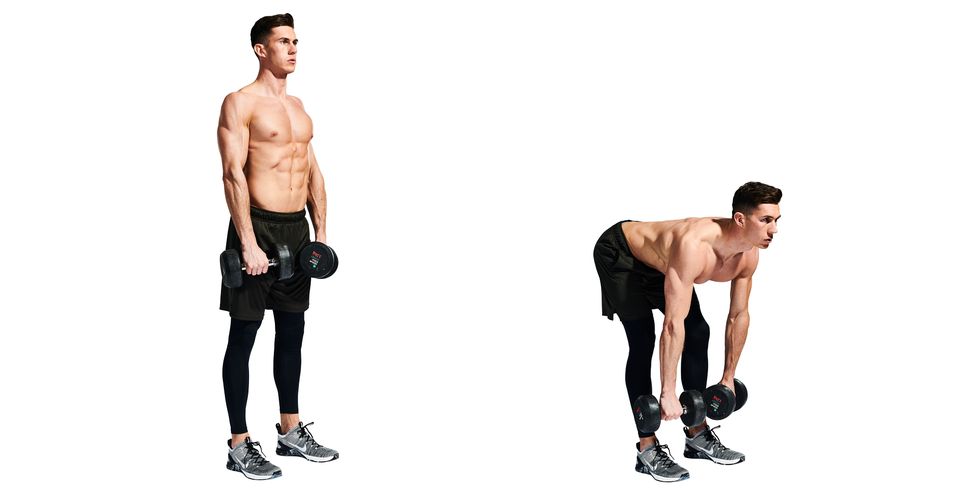Fitness
Can’t afford gym membership or don’t want to join? Here are 3 ways to create your own DIY exercise program

With the rising cost of living, gyms memberships and fitness classes are becoming increasingly unaffordable. But the good news is you can make just as much progress at home.Cardiovascular endurance, muscle strength and flexibility are the most important components of fitness. And each can be trained with little or no equipment. Let’s look at why – and how – to fit them into your DIY exercise programme.1. Cardiovascular endurance: Cardiovascular endurance exercise (or “cardio”) forces the heart and lungs to increase the supply of oxygen to the working muscles. Heart disease is a leading cause of death and cardiovascular endurance exercise helps keep the heart healthy.
The best thing about cardio is you don’t need any fancy equipment to do it. Walking, jogging and running are great options, as are cycling, skipping rope and swimming.
There are two approaches to maximise cardiovascular endurance:
high-intensity interval training (HIIT) – short bouts of hard exercise (around 80% to 95% of your maximum heart rate) interspersed with lower intensity recovery periods (around 40% to 50% of your maximum heart rate).low-intensity steady-state (LISS) exercise – aerobic activity performed continuously at a low-to-moderate intensity (around 50% to 65% of your maximum heart rate) for an extended duration.Both are great options. While high-intensity interval training can be more time efficient, low-intensity steady-state training might be more enjoyable and easier to sustain long-term.
No matter what you choose, aim for a minimum of 150 minutes of moderate-intensity or 75 minutes of vigorous-intensity cardiovascular exercise each week. For example, you could try 30 minutes, five days per week of low intensity cardio, or 25 minutes, three days per week of high-intensity activity, or a combination of the two.
How do you know if you’re exercising at the right intensity?
Smart watches that measure heart rate can help to monitor intensity. Or you can rely on the good old-fashioned talk test. During low-intensity activity, you should be able to speak in full sentences. Conversely, short phrases (initially) or single words (towards the end) should be all that’s manageable during high-intensity exercise.
2. Muscle strength: Next is muscle strength, which we train through resistance exercise. This is important for bone health, balance and metabolic health, especially as we age and our muscle mass and strength declines.
Aim for two days per week of whole-body resistance exercise performed at a moderate or greater intensity. Try to build two weekly sessions that target the major muscle groups. This could include:
squats – lower to the ground from standing by bending the hips, knees, and ankles while keeping the chest up tall before returning to standing by straightening the hips, knees and ankles.
hinges – fold forward at the hips by pushing your bottom back to the wall behind you, keeping your back straight. A slight bend in the knees is fine but aim to keep your shins vertical
push-ups – if a full push-up is too difficult, you can place your hands on a raised surface such as a step or a chair
horizontal and vertical pull ups – using something like a portable chin up bar, which you can buy from sports supply stores
vertical pushes – pushing an object (or weight) vertically from the top of your chest to an overhead position.
Once you have selected your exercises, perform 2–3 sets of 8–12 repetitions at a moderate to greater intensity, with about 90 seconds rest between each set.
As you progress, continue to challenge your muscles by adding an extra set to each exercise, or including dumbbells, changing body position or wearing a backpack with weights. The goal should be to progress slightly each session.
However, if you have any underlying health conditions, disabilities, or are unsure how best to do this, see an exercise physiologist or physiotherapist.
3. Flexibility: Improved flexibility can increase your range of motion and improve your ability to manage daily life.
While we don’t know the best means of increasing flexibility, the most basic and readily accessible is static stretching. Here, we lengthen the muscle – for example, the hamstrings, until we feel a “stretching” sensation. Hold that position for 15–30 seconds.
While the precise intensity of this stretching sensation remains elusive, around 5–10 minutes per week per muscle group, spread across five days, seems to provide the best results.
How to stick with it?
The best exercise is the one that gets done. So, whatever you choose, make sure you enjoy it. After all, it’s about creating an ongoing commitment to exercise that will deliver long-term health benefits.
It’s also important to ensure you’re ready to exercise, especially if you have any underlying health issues, have been previously inactive, or are unsure how to start. A pre-exercise screening can help you to determine whether you should see a doctor or allied health professional before starting an exercise programme and for guidance on the next steps.

Fitness
Haven’t Been to the Gym in a While? Here’s How to Get Back in Shape.

LIFE CAN GET in the way of your goals, particularly when it comes to fitness. Kids need raising, work gets busy, and all of a sudden, you realise you don’t remember the last time you saw the inside of a gym. The struggle is real – and when you come to this type of crossroads, you’re stuck with a difficult question: How can you get back into working out?
This quandary can be especially frustrating for those of us who have fallen off the workout wagon. You’re not exactly a beginner; you knew your way around a gym back in the day. It’s just been a little since you’ve pushed any weights other than a stroller or shopping cart, or gone on a run beyond chasing down an errant toddler. The good news is you likely already know the basics. Now, it’s all about putting those building blocks back together.
If you’re not sure how to restart your fitness journey, we asked fitness expert Mathew Forzaglia, C.F.S.C., about his top tips on getting back into shape.
How Can I Get Back Into Working Out?
Obviously, the first step to getting back into working out is by actually going. Make a commitment to get back in the gym by setting an achievable goal, like hitting three workouts per week. Make sure that you don’t push too hard, too soon though. A key mistake many make when getting back into fitness for the first time in a while is doing more then they’re capable of before building back up. That can be a tough pill to swallow – but, the truth is, if you haven’t trained in a long time, you likely won’t lift as much as you did before.
‘Don’t bite off more then you can chew,’ says Forzaglia. ‘[For] load, don’t even look at anything above 70 to 75 percent of your max effort.’
The last thing you want to do is finally get into the gym for the first time in a while, go too hard, get injured, and not be allowed to go back. Take your time getting into the swing of things. You will be able to get back to that one rep max number you hit three years ago – but you have to put your ego aside for now, and build your way back up to it.
If you struggle to figure out what those effort percentages mean for you in real life, think instead about finding a weight that you can comfortably control for 10 to 12 reps, Forzaglia says. This range will provide you a solid foundation of strength.
Pick four to five exercises to which you can apply this formula, selecting one from each of the main movement patterns: squat (goblet squat), press (pushup), hinge (deadlift), and pull (cable row). Do about three sets of those 10 to 12 reps, and do that workout about three times per week. That will set a solid foundation for you to then build off of once you feel like you’re ready.
Take a similar tactic as you ease back into cardio exercise, too. Hopping straight into a HIIT workout won’t be great for your body, so consider less-intense options for interval training. Even if you used to run for multiple miles in one go several times a week, Forzaglia advises starting with shorter distances (one to three miles max) and build up once you feel capable.
The amount of time it will take you to get back to where you were before will vary. If you’ve only been out of the gym for a month or so, you might bounce back faster than someone who’s been out of it for several years. The key is to stay consistent.
6 Exercises to Ease Back Into Working Out
Now that you know the tactics, all you need is the tools. These six exercises are Forzaglia’s go-to moves for priming your muscles after taking some time off from the gym. You’ll squat, lunge, push, pull, and hinge – all essential components of a solid training plan. Add them to your sessions and keep the load at a manageable level until you feel comfortable progressing.
Goblet Squat
How to Do It:
- Stand with your feet just wider than shoulder-width apart. Turn your toes out slightly to start; as you progress, find the most comfortable stance for your own mobility.
- Hold a kettlebell or dumbbell with both at chest-height, elbows high. Crate mid-back tension to pull your shoulders back. Brace your core to keep your balance; you’ll need to maintain this tension throughout the movement.
- Push your butt back, then bend your knees to descend down into the squat. Lower down to a depth just below parallel (i.e., your thighs are parallel to the floor) or to the most comfortable position given your personal mobility.
- Press your knees apart to prevent them from caving in. Maintain tension in your core and shoulders; don’t rest your elbows on your knees.
- Squeeze your glutes to stand back up.
Sets and Reps: Aim for 3 sets of 10 to 12 reps
Lateral Lunge
How to Do It:
- Stand with your feet shoulder-width apart. Squeeze your glutes, and, and shoulder blades, keeping your gaze neutral at a point straight ahead of you.
- You can perform lunges with only your bodyweight, or use a wide range of implements like dumbbells, kettlebells, or barbells held in a number of positions. For simplicity’s sake, start by holding a pair of dumbbells, one in each hand at hip-level.
- Step forward and slightly out with one leg, landing with your heel first. Work to avoid slamming your knee into the ground. Keep your chest in an upright position, bending your knees to form right angles with both of your legs. Turn on your forward glute muscle to help protect your knees.
- Drive off the ground with your front heel to step back into the starting position. Keep your torso in a solid upright position by squeezing your core to stay balanced.
Sets and Reps: Aim for 3 sets of 10 to 12 reps
Step Up
How to Do It:
- Hold the kettlebells or dumbbells by your sides, suitcase style. Place your foot up onto the box.
- Shift onto your toes on the back leg, this will help you not use the push off of the back leg and focus the effort in your front foot.
- Squeeze your glute and of your front leg. Drive through the foot, and fully extend your hip and knee. Pause for a second at the top.
- Take your time to slowly lower back down.
Sets and Reps: Aim for 3 sets of 10 to 12 reps
Inverted Row
How to Do It:
- Start with a bar placed in a rack or Smith machine, lying on your back underneath. Adjust the bar to a height just above your reach with your arms extended.
- Reach up and grab the bar with an overhand grip, with your hands just wider than shoulder-width apart. Put your feet together, forming a straight line from your feet to your shoulders. Pull yourself up off the floor, squeezing your shoulder blades, abs, and glutes to create full body tension.
- Pull yourself up, imagining that you’re pulling the bar down to your chest. Pause for a count at the top of the movement.
- Lower yourself back down under control.
Sets and Reps: Aim for 3 sets of 10 to 12 reps
Push-Up
How to Do It:
- Start in a high plank position, with your palms flat on the floor, stacked directly below your shoulders.
- Squeeze your shoulders, glutes, and core to create full-body tension. Your spine should form a straight line, with a neutral spine.
- Bend your elbows to descend to the floor, stopping with your chest just above the ground. Your elbows should be at a 45 degree angle relative to the torso.
- Press back up off the floor, raising up to the top position with your elbows fully extended.
Sets and Reps: Aim for 3 sets of 10 to 12 reps
Dumbbell Romanian Deadlift
How to Do It:
- Standing with you feet about shoulder-width apart, grab a pair of dumbbells from a bench or box.
- Keep the dumbbells close to your sides, with your shoulders back, your core tight, and glutes squeezed.
- Begin “pushing” your butt back as far as possible as you begin lowering your torso – as if you’re trying to close a car door. Think about taking two seconds with the lowering phase. The goal is to get to about a 45-degree angle, depending on your personal mobility limits. Don’t forget to keep the dumbbells close to your shins – don’t let them hang too far forward.
- Pause at the bottom, then stand back up, slightly quicker than the lowering phase.
Sets and Reps: Aim for 3 sets of 10 to 12 reps
Cori Ritchey, C.S.C.S., is an Associate Health & Fitness Editor at Men’s Health, a certified strength and condition coach, and group fitness instructor. She reports on topics regarding health, nutrition, mental health, fitness, sex, and relationships. You can find more of her work in HealthCentral, Livestrong, Self, and others.
Fitness
5+ ways to achieve your health and fitness goals and stay active in Auckland
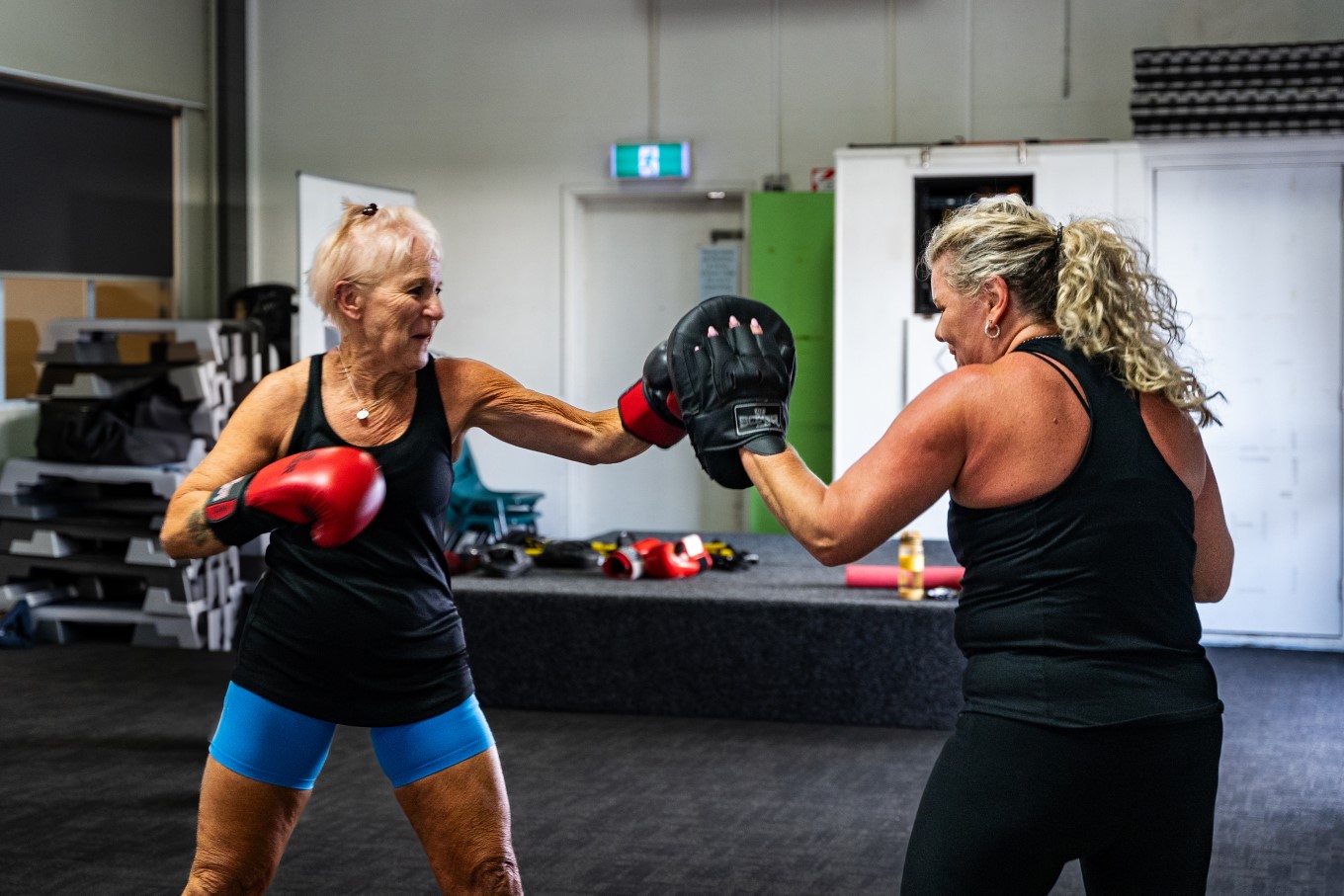
From the court to the coast, Tāmaki Makaurau is teeming with ways to stay active and thrive. If your New Year’s resolution is to make 2025 the ‘Year of You’ by focusing on health and wellbeing – or if you simply want to change up your current fitness routine – these Auckland activities will help you raise your heart rate while also making your heart sing.
If you plan to pair your exercise with a dose of vitamin D, there are plenty of parks and maunga that are the perfect location for you to step into action. Many parks around Auckland also have outdoor exercise equipment available, ranging from calisthenics equipment for training using your body weight, to outdoor machines such as a leg press and an arm cycle. If you’d prefer to have options for rainy days, then consider joining a gym at your local Auckland Council Pool and Leisure Centre.
At Marlborough Park in Glenfield, you can try out the exercise equipment such as the leg press while the rest of the family plays on the basketball court or playground.
Keen to make some net gains in your exercise routines? Consider smashing your fitness goals on the court. Tennis is fantastic cardiovascular exercise and it’s also good for strength, agility and mental stamina – especially when you’re challenging a friend to a match. There are more than 60 tennis courts around the region ready to serve. If you need racquets, why not visit your local Community Recycling Centre to find an ace second-hand option.
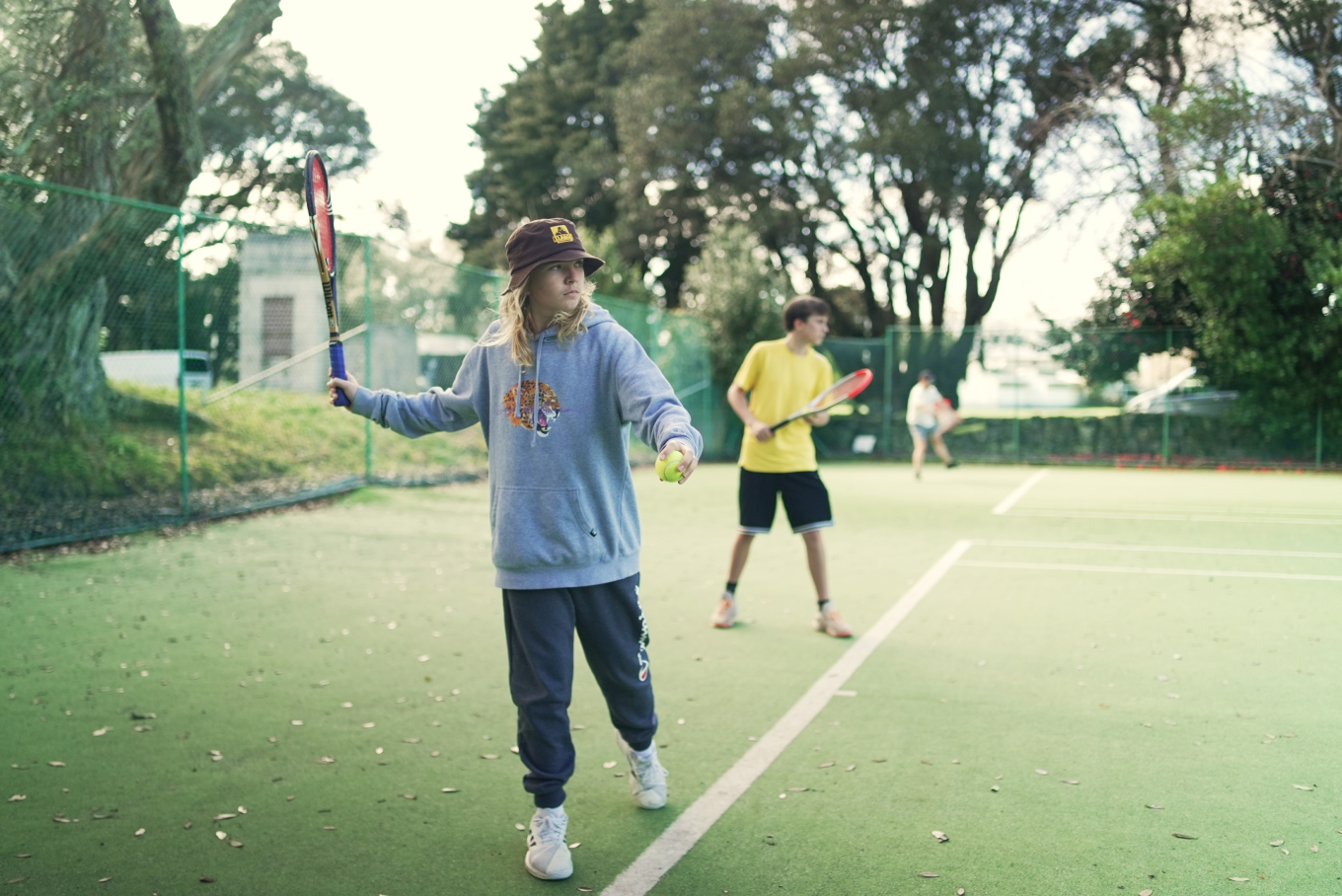
There are many tennis courts around Auckland great for a smashing good game, including at Mt Eden’s Nicholson Park.
Want to try something new? Try Pickleball. This fast-growing sport can be played at several Auckland Council Pool and Leisure Centres, and is a hybrid of tennis, table tennis and badminton. Played using a paddle and a wiffle ball, this fun sport is good for all ages, but it is especially suitable for seniors as the serve is underarm (easier on shoulders) and the court is slightly smaller.
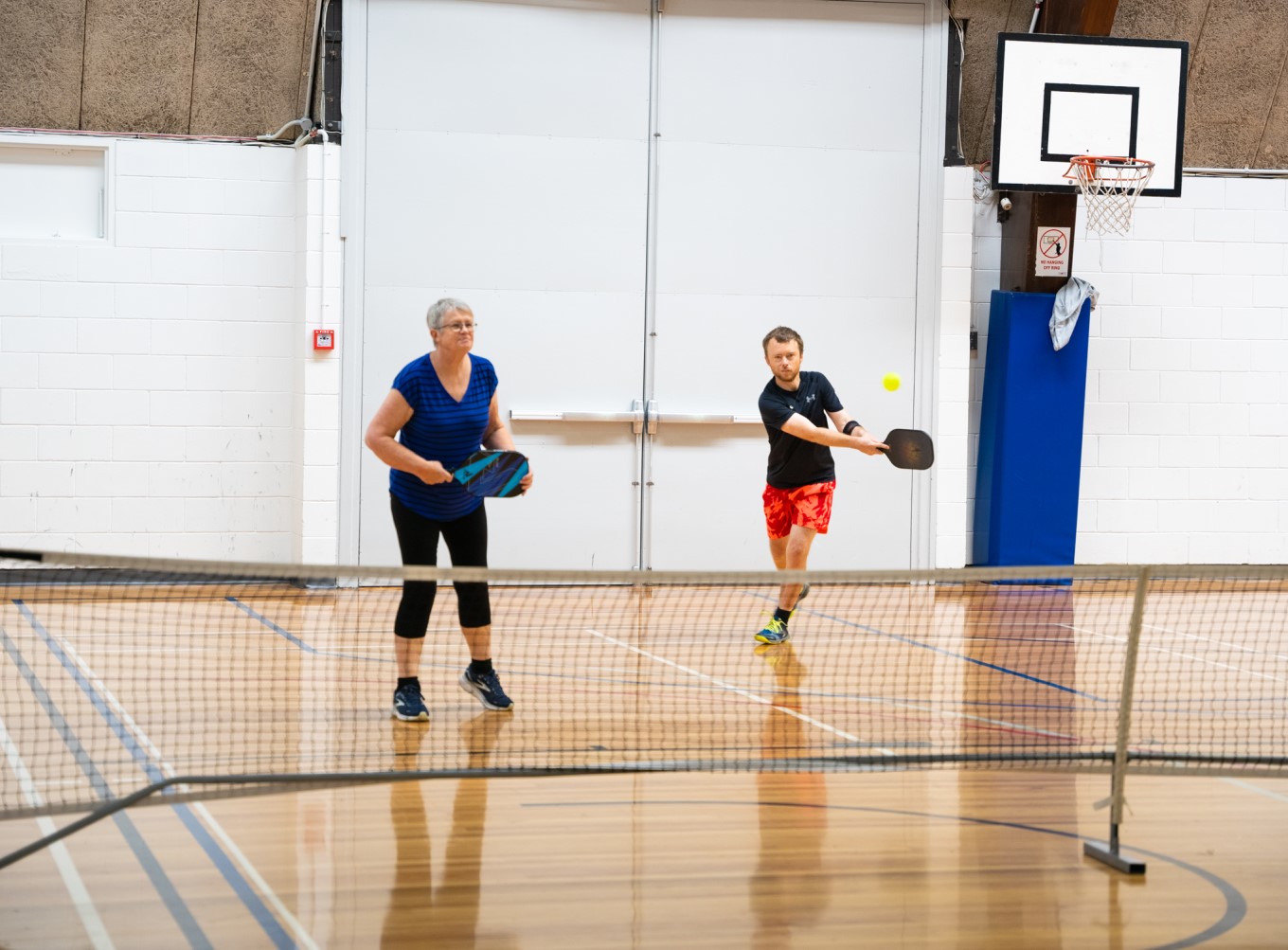
Pickleball is one of the fastest growing sports and is good for all ages.
Whether you’re hooked on BoxFit, kicking into gear at Body Combat or getting your fitness en pointe in a Barre class, there are a multitude of group fitness classes held at Auckland Council Pool and Leisure Centres across Auckland. Working out in a group is a great way to stay motivated, form an exercise routine and have fun, and there are classes dedicated to all fitness levels and age groups.
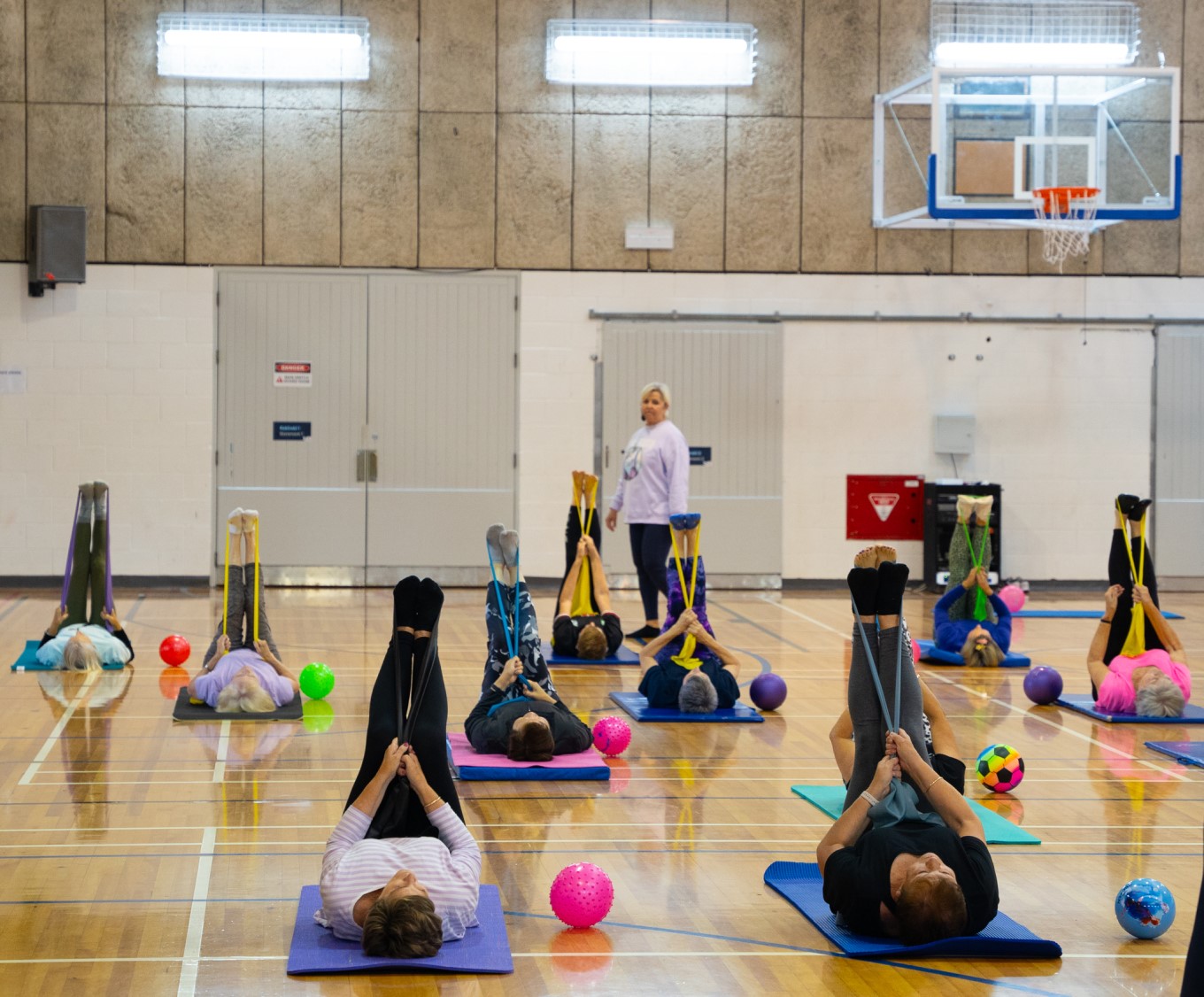
A FlexiFIT group class is a fun way to stay limber.
Take your workout to new lengths by swimming in one of Auckland Council’s public pools. Swimming is a full-body workout that is also low impact due to the buoyancy of the water. There are pools across the region, and in summer there are also locations such as Parnell Baths and Point Erin Pool – ideal for beating the heat.

The outdoor swimming lanes at Point Erin Pool are great way to cool off in summer while getting a dose of vitamin D.
Aqua fitness classes are a low-impact option well suited to those living with arthritis, struggling with obesity, recovering from an injury – or who simply like to cool off while exercising.
Hit the ground running in 2025 by pounding the pavement or the tracks. AKL Paths can help you find a path near you – the website helpfully states the amount of kilometres, walking steps and minutes of each track to help you meet your goals.
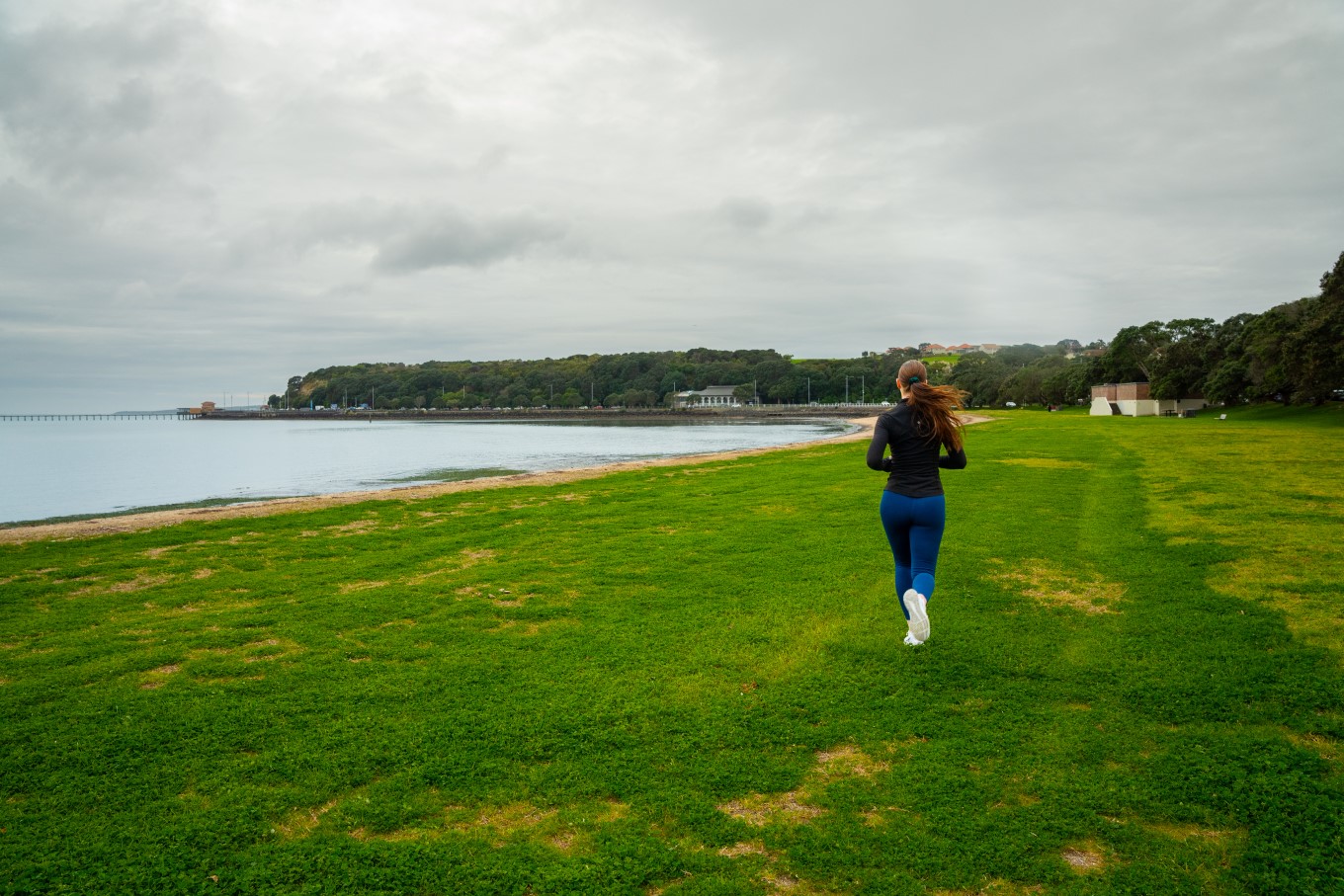
Okahu Bay Reserve is a great running spot.
For added motivation, why not set yourself the long-term goal of running in the Auckland Marathon in November? And to take your mind off your burning legs, try listening to an audiobook from Auckland Libraries while on the move.
With around 3200km of coastline, Auckland’s harbours, beaches and rivers are beautiful places to keep fit. Surfing or boogie boarding is not only fun but also an excellent workout – paddling exercises your shoulders, back, chest and arms, and balancing on the board works the core. The crumbly waves and beach breaks at Omaha and Ōrewa make them good options for beginner surfers. Piha is an internally renowned surfing beach, but due to its strong currents it’s best suited to advanced surfers.
There are lots of other ways to keep fit on the Auckland coast such as stand up paddleboarding at Takapuna Beach or kayaking at Ōrākei Basin (check the flushing schedule).
Before taking to the water always check the conditions at Safeswim and if there are lifeguards on the beach make sure to swim between the flags.

Ōrākei Basin is a great spot for kayaking. The flushing schedule shows when the basin will be tidal and the online schedule also shows when the basin is used for waterskiing.
Fitness
Is hot yoga good for you? What to know about the benefits, potential risks and more
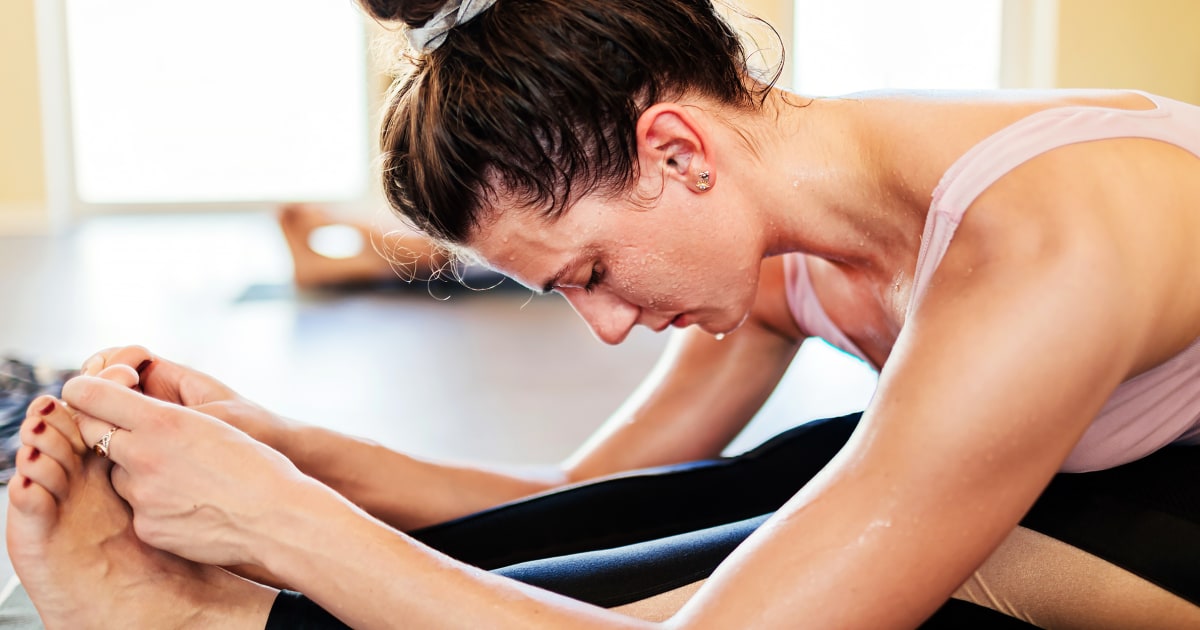
Yoga can be challenging to begin with, but doing it in a heated room can feel next-level intimidating.
Like most forms of exercise, hot yoga comes with benefits as well as risks to know about prior to your first class. The heated mind-body practice is beloved by some, while it’s a hard skip for others. But is it for you?
Read on to learn more about what is involved in hot yoga, any benefits and risks associated with the practice and a glimpse at what you could see in class.
What is hot yoga?
Hot yoga is just what it sounds like — yoga done in a heated room.
The practice was popularized by Bikram yoga, a hatha-style class done in a 105-degree room with 40% humidity, consisting of 26 postures and two breathwork sequences. Bikram, named after its controversial founder who was the subject of the 2019 Netflix documentary, began in the 1970s, and many other practices of hot yoga have since emerged.
The length, temperature and yoga style that make up a hot yoga class is largely dictated by the studio you’re practicing at.
At Modo Yoga LA, for example, the temperature is kept at 99-100 degrees and 40-60% humidity, a formula that its co-founder Alice Toyonaga describes to TODAY.com as accessible, sustainable and follows one of their pillars, “be healthy.”
Toyonaga says their studios offer hot yoga classes in traditional yoga styles, such as hatha, vinyasa and yin, but also hybrid series that incorporate other workouts, such as HIIT or Pilates, in a heated room.
“Just like with everything else, not all hot yoga is created equal,” Toyonaga explains. “And so, quite often, we’ll have people who’ve been like, ‘Oh, I tried this, and that wasn’t for me.’ And that’s absolutely fair, and it doesn’t mean that one type is right or wrong.”
Hot yoga temperature
In Bikram hot yoga, poses are performed in a 105-degree room with 40% humidity. For other hot yoga classes, the studios determine the temperature. While Cleveland Clinic reports that the room for hot yoga is typically heated between 90 and 105 degrees, the temperature can go lower or higher than that range.
Is hot yoga good for you?
The physical and mental benefits of doing yoga apply to its heated version. Common pros to the practice include building muscle, toning, increasing flexibility, dealing with the stresses of daily life and practicing mindfulness. But some of those benefits are amplified in elevated heat.
Improved flexibility
When exposed to higher temperatures, Toyonaga says muscles become more flexible and joints increase their range of motion.
“While there are definitely demographics of people who do yoga who are already quite flexible, what they need to work on is, let’s say, strength over mobility,” she continues. “We are working on a computer. We’re hunched over. We are behind the wheel of a car here in LA. So there’s just a lot. We’re just a static culture, so to speak.”
“And so, we do need any little assist to our range of motion to get a deeper stretch within poses,” she continues. “The heat is definitely something that helps to do that.”
Improved heart health
Another plus to doing hot yoga is that it’s more physically demanding and therefore makes the heart pump faster, which can improve cardiovascular health, as long as there are no preexisting conditions.
Reduced stress
Beyond the physical benefits, hot yoga can also help one’s mental state through the adversity faced inside of a heated room and the de-stressing that comes with it.
“It does play a big psychological role in that you are overcoming this challenge and adversity with your breath, and you’re doing that on your mat,” Toyonaga says. “It’s a controlled environment, but what an awesome lesson that we can take with us in line at Trader Joe’s.”
She added: “I feel like a lot of the times, with the heat and we’re trying to get through this class, we are in a way becoming more present than when we’re off of our mats because we are focused on this next breath, this next pose, this next sequence, and being that embodied and that present really helps us get out of our own way and (is) a really nice way to destress.”
Are there any risks or dangers to hot yoga?
When thinking about doing a hot yoga class for an extended period, you might be wondering if the heated practice comes with any health risks.
First, and most importantly, if you have any specific concerns or underlying preexisting conditions, always check with your doctor before taking a hot yoga class.
A common risk when it comes to practicing hot yoga is dehydration, due to the loss of water weight from sweating in high temperatures and humidity. This can lead to feeling faint or ill during class.
Toyonaga stresses the importance of having an ample amount of water before and after class, because if you start to feel unwell during the practice, you might already be dehydrated and “drinking during that yoga class is not going to make much of a difference.”
While heat helps muscle flexibility and loosens joints, Dr. Jordan D. Metzl, a sports medicine physician at Hospital for Special Surgery, says it’s important to avoid exaggerating your stretches at the risk of injury.
“The risk is you can overstretch a hamstring or a quad or a hip, and sometimes put yourself in a position where you’re getting a little more stretch out of that muscle than it’s used to being,” he tells TODAY.com.
“You can sometimes make an injury a little more pronounced than it would normally be because you get the position a little more exaggerated than you normally would be because you don’t feel it as much when you’re in that really hot environment,” he continues.
Metzl gives simple advice to prevent yourself from going too deep into stretches: Listen to your body.
“You just have to be smart about not looking at the person next to you and trying to emulate them,” he continues. “Just listen to your body … to make sure you’re not overdoing it, and just being mindful that you’re not feeling really faint or it’s too much for you, especially at the beginning.”
Natalia Perez-Segnini, a yoga teacher, functional and therapeutic breathwork coach, Tone House coach and mindset guide, encourages taking a rest or stepping outside the studio, if you start to feel unwell.
“Stop, lay down, get in child’s pose, Savasana, a restful position for you and find your breath again,” she tells TODAY.com. “And when you’re able to feel that steady flow within your inhales and your exhales, then ask yourself if you want to try it again.”

What should beginners know before going to class?
In addition to staying hydrated before and after class, and understanding the potential risks of the practice, people who are new to hot yoga should generally take their first few classes slow and focus on adjusting to the temperature.
“The first three to five classes, you’re getting used to the heat. That’s what you’re doing,” Toyonaga says. “You need to rest as much as you need to rest in that room, so that we’re getting used to the heat. So if you lie there for the whole hour, just pretend you’re on the beach in Mexico. You’re still doing it.’”
Perez-Segnini emphasizes that for all yogis, but especially beginners, it’s important to pay attention to how they feel throughout the course of the practice.
“This practice, hot yoga, regular yoga in general, is less about the shapes that you’re making with your body, and more about what you feel in your body,” she explains.
Perez-Segnini says that when she first started taking up hot yoga, she wishes someone told her that you don’t have to stick to just one intention, but rather figure it out as you go.
“In class, in the middle of a posture, halfway through, after, you’re allowed to change your mind about the why,” she says. “You’re allowed to change your mind about what you’re doing, and if that means coming out of a pose because you don’t feel great, or realizing that you’re taking it too far … there’s always time to change our minds, no matter where we’re at in life, no matter where in class we are.”
What to wear to hot yoga
What do you wear while exercising in an over-90-degree room for an extended period of time? When in doubt, go with something that you feel comfortable in — and avoid cotton.
“What we will see in the hot room will be more technical fabrics, like things that you would wear to the gym, as opposed to cotton,” Toyonaga says. “A lot of our favorite brands have sweat-wicking clothing, whether it’s tights or shorts, sports bra, a tank top, T-shirt, whatever it is.”
Perez-Segnini says that while it may seem “counterintuitive,” she wears a sports bra paired with pants, which absorb her sweat and gives her more traction.
“If there are any arm balances in class, (there’s) no shot I’m able to pop up into crow with shorts on because I’m sweating so hard, and then that’s dangerous, because you’re slipping off of your own skin,” she explains. “There’s more traction, you have more grip available, depending on the posture that you’re in, when you have skin to fabric contact.”
However, Perez-Segnini says that everyone has different preferences, and that finding what works best for you clothing-wise is part of the process.
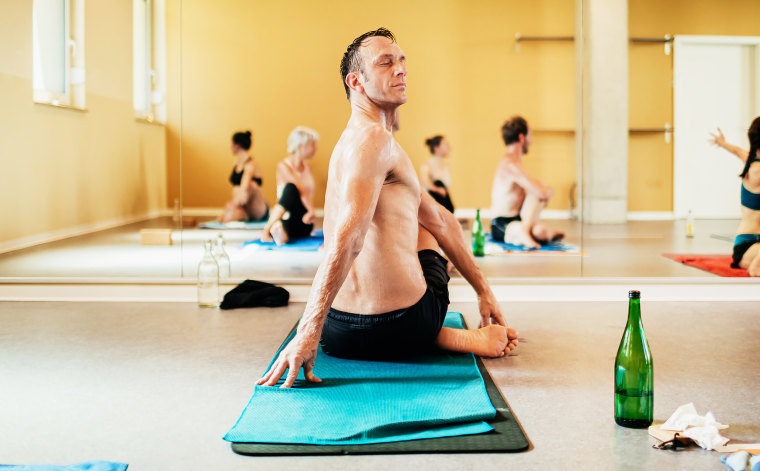
Poses in hot yoga classes
Just like in any yoga class, the postures you’re asked to do will vary by location and instructor, and there aren’t any poses specific to hot yoga itself. However, here are some common postures to get you in the right mindset for what’s to come.
-

 Business1 week ago
Business1 week agoOpenAI's controversial Sora is finally launching today. Will it truly disrupt Hollywood?
-

 Politics6 days ago
Politics6 days agoCanadian premier threatens to cut off energy imports to US if Trump imposes tariff on country
-
/cdn.vox-cdn.com/uploads/chorus_asset/file/25782636/247422_ChatGPT_anniversary_CVirginia.jpg)
/cdn.vox-cdn.com/uploads/chorus_asset/file/25782636/247422_ChatGPT_anniversary_CVirginia.jpg) Technology1 week ago
Technology1 week agoInside the launch — and future — of ChatGPT
-
/cdn.vox-cdn.com/uploads/chorus_asset/file/25789444/1258459915.jpg)
/cdn.vox-cdn.com/uploads/chorus_asset/file/25789444/1258459915.jpg) Technology5 days ago
Technology5 days agoOpenAI cofounder Ilya Sutskever says the way AI is built is about to change
-

 Politics5 days ago
Politics5 days agoU.S. Supreme Court will decide if oil industry may sue to block California's zero-emissions goal
-
/cdn.vox-cdn.com/uploads/chorus_asset/file/25546252/STK169_Mark_Zuckerburg_CVIRGINIA_D.jpg)
/cdn.vox-cdn.com/uploads/chorus_asset/file/25546252/STK169_Mark_Zuckerburg_CVIRGINIA_D.jpg) Technology6 days ago
Technology6 days agoMeta asks the US government to block OpenAI’s switch to a for-profit
-

 Politics7 days ago
Politics7 days agoConservative group debuts major ad buy in key senators' states as 'soft appeal' for Hegseth, Gabbard, Patel
-

 Business4 days ago
Business4 days agoFreddie Freeman's World Series walk-off grand slam baseball sells at auction for $1.56 million




